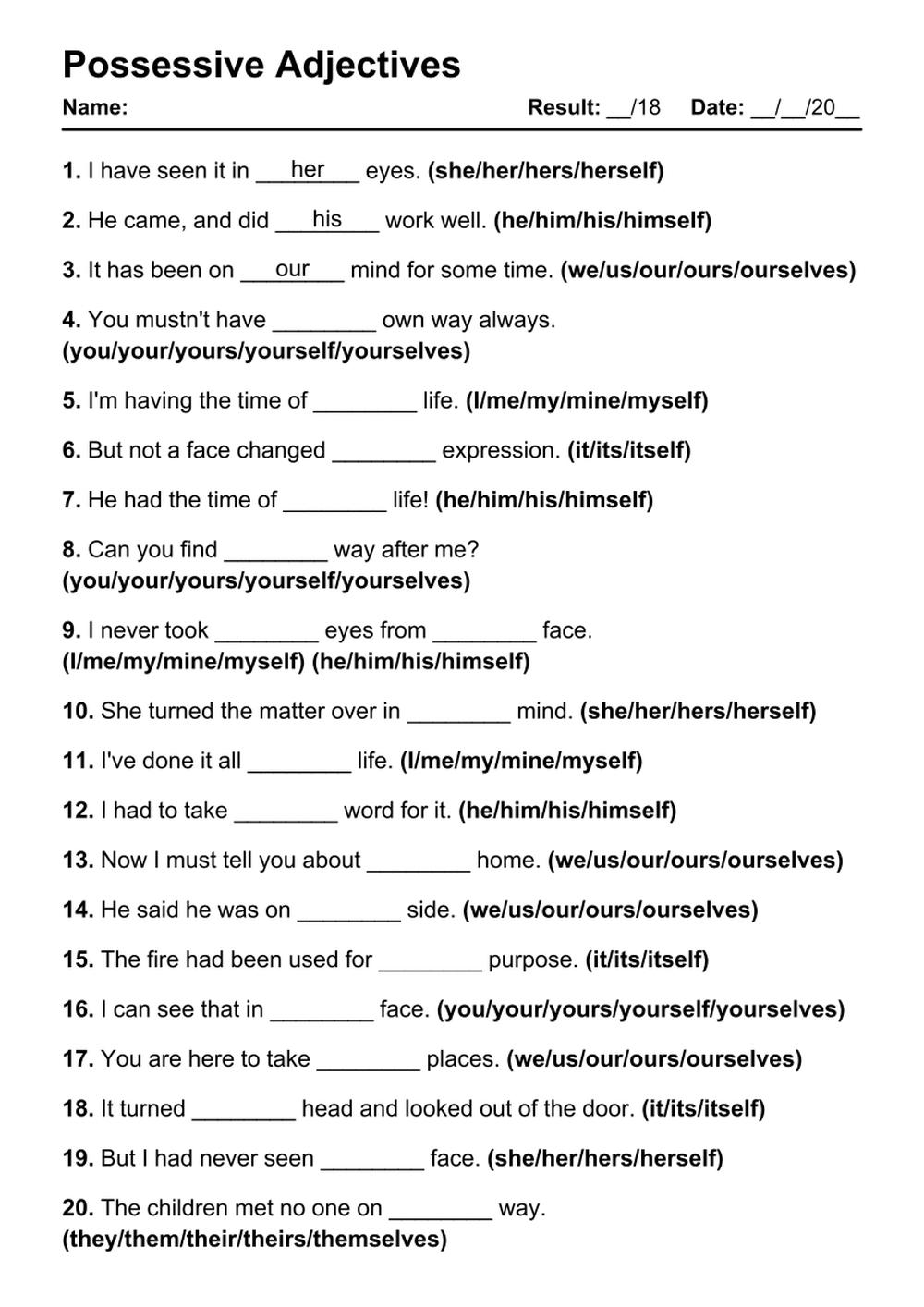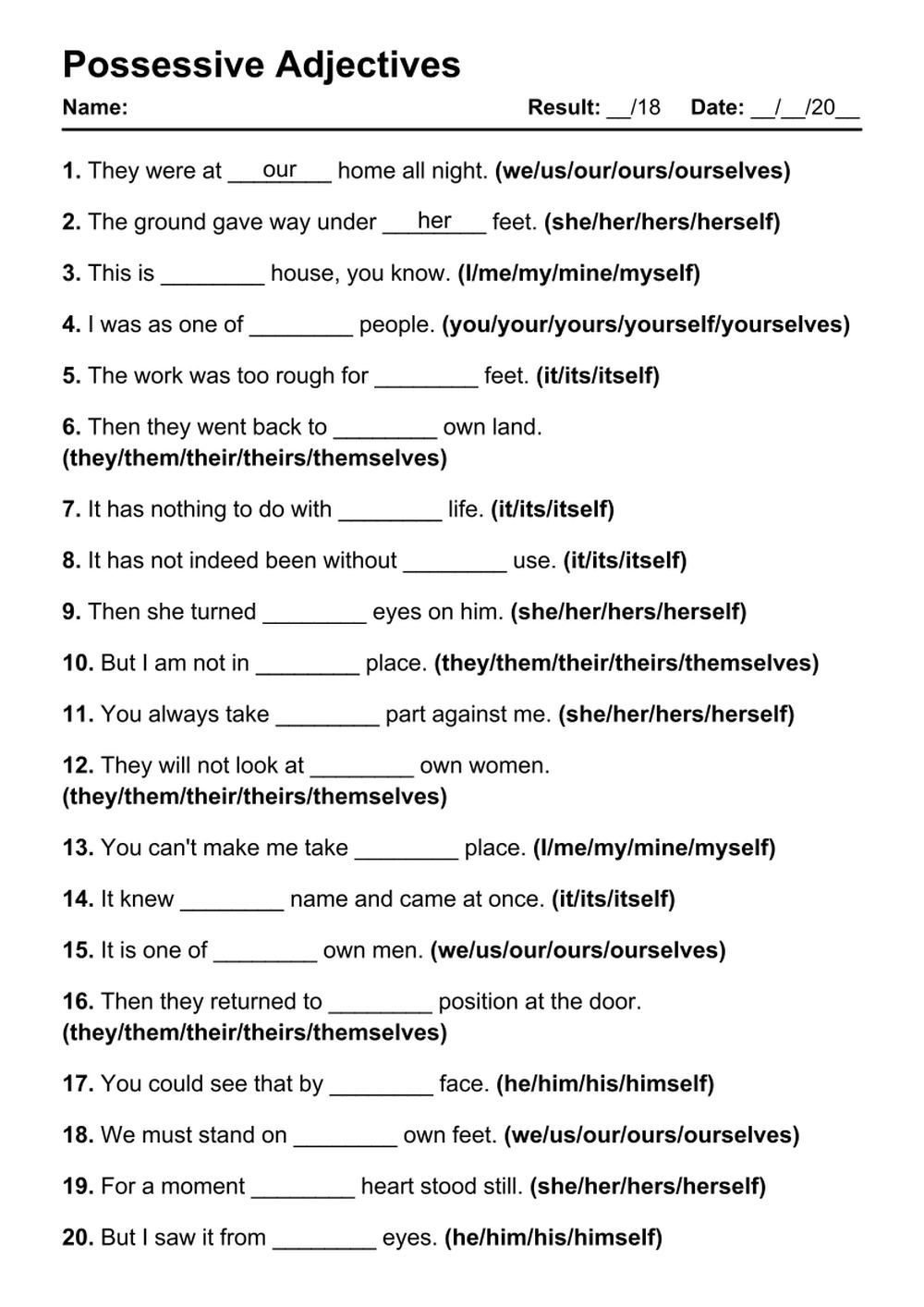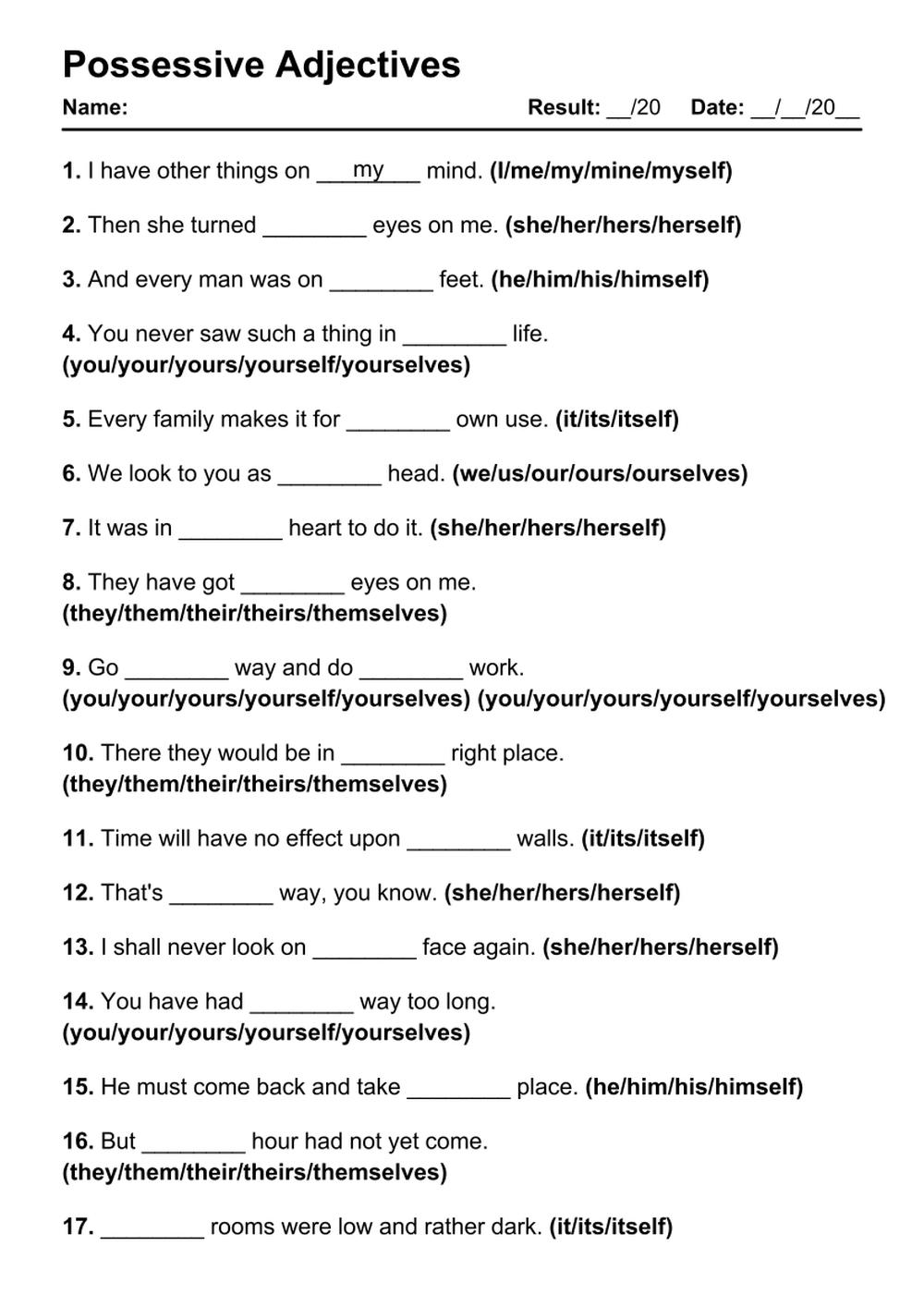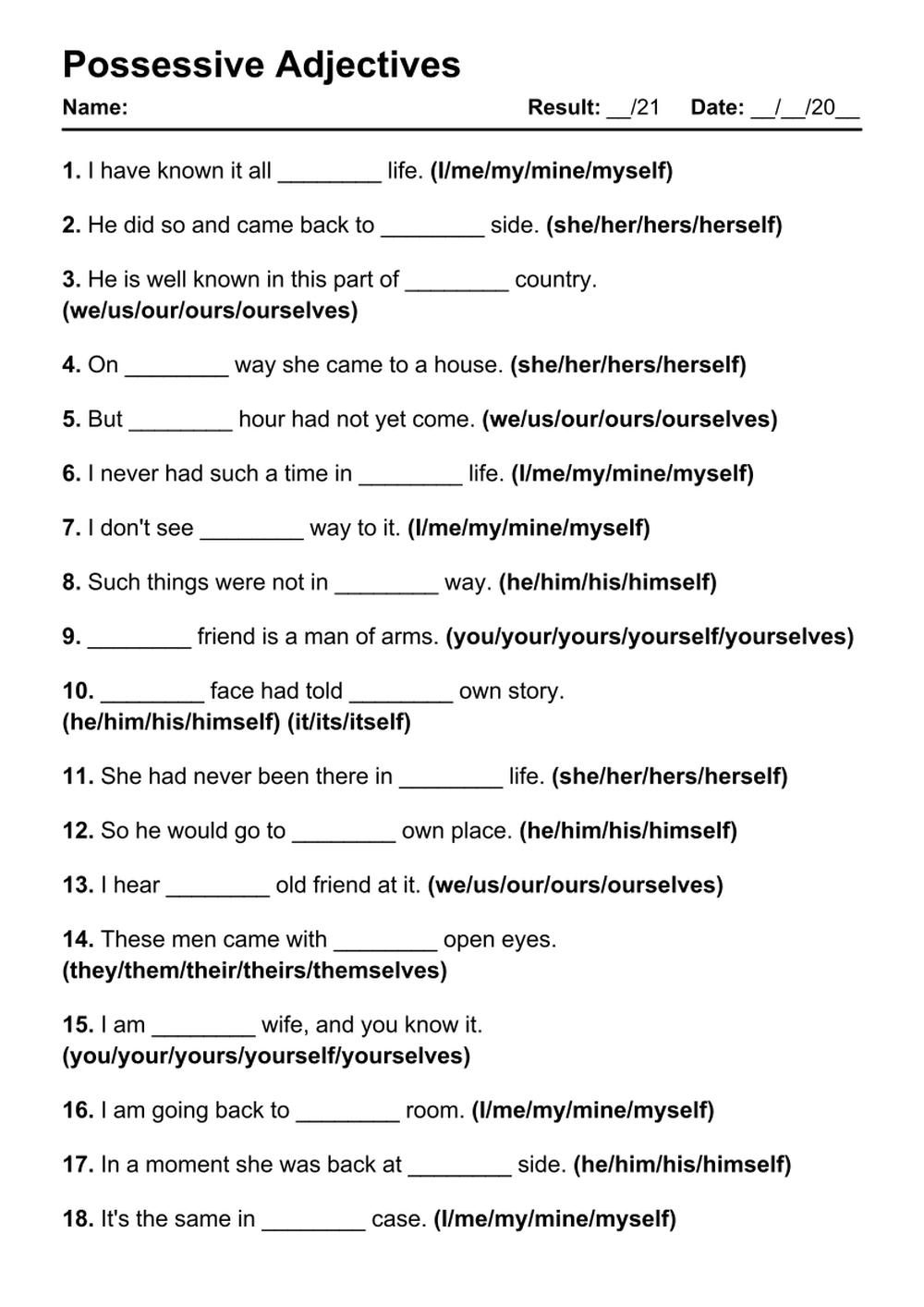Printable Possessive Adjectives Exercises - 101 PDF Worksheets with Answers





































































































Possessive Adjectives Printable PDF Worksheet Tests with Exercises and Answers
Access a collection of 101 printable PDF worksheets focusing on the English grammar topic of the possessive adjectives. Download fill-in-the-blank tests with exercises and answer keys for possessive adjectives to print for free. The activities in the sheets are suitable for kids, adults, ESL learners at the beginner, elementary, and intermediate levels to practice English grammar.
Related Pages
- Possessive Adjectives Online Exercises
- Ed Ing Adjectives PDF Worksheets
- Indefinite Pronouns PDF Worksheets
- Objective Pronouns PDF Worksheets
- Order of Adjectives PDF Worksheets
- Personal Pronouns PDF Worksheets
- Possessive Pronouns PDF Worksheets
- Reflexive Pronouns PDF Worksheets
- So Such PDF Worksheets
- Subjective Pronouns PDF Worksheets
- This That These Those PDF Worksheets

 Bundle
Bundle Worksheet
Worksheet
 Save
Save